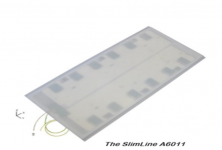
RFID solution based on aviation baggage handling
[ad_1]
The Spring Festival is approaching in 2021, are you still worrying about how to check large and small bags? Integrated aviation baggage handling plays a vital role in the airport, efficient and orderly baggage sorting, positioning control and tracking, It is one of the important factors that reflect the quality of airline services.
The traditional airline baggage splitting method is that when passengers check their baggage before boarding, the baggage will be put on the conveyor belt and sent to the plane on which they are flying. The new generation of integrated aviation baggage handling is the use of RFID technology solutions to complete baggage consignment.
Take Hong Kong International Airport as an example. There are thousands of luggage every day, and each luggage has its own unique barcode. Their recognition accuracy is as high as 80%, but there will be one out of every five luggage checked by passengers. :
Or it cannot be correctly identified, which leads to the misdelivery, delay, or damage or loss of the baggage; or the passenger cannot make the trip due to temporary changes after the baggage check-in procedures are completed, and the checked baggage needs to be picked out with a probability of 20%. ; Air baggage check requires real-time, accurate, cross-regional tracking and other links;
The traditional air baggage separation method does not have effective monitoring methods; it is time-consuming and labor-intensive, and it may affect the plane’s punctual take-off and flight safety. Airport airlines need to spend a lot of time and energy to deal with these disputes every year. The solution brought great economic losses to the company.
RFID technology helps aviation baggage handling solutions
[RFID external antenna]
11dbi flat circular polarized RFID conveyor belt ultra-thin antenna A6011, as a part of the SlimLine series of airport antennas, is a particularly suitable external flat panel antenna array for UHF RFID applications based on conveyor belts.
It is encapsulated with ultra-thin UHMWPE (ultra-high molecular weight polyethylene) radome, which is used for continuous 24×7 work in an environment where downtime is not optional. The thickness is only 12 mm/0.5 inches. It is designed for quick and easy installation. Ideal for airports, to meet baggage handling systems or any conveyor belt application.
RFID readers use RFID external antennas and affix RFID electronic products to each piece of luggage to record various information about aircraft passengers, such as flight parking position, take-off time and other information, to track, allocate and transmit luggage;
When baggage is entrusted by the passenger’s audience to take over the airport baggage transportation, the various controls of its flow such as sorting, installation of electronic tag reading and writing equipment at the pickup area, and then transmission to various departments, baggage information is shared in the entire transportation process In this way, the management level and efficiency are improved, and the luggage will be delivered to the destination on time and accurately, improving safety management.
[RFID technology advantage]
Ensure the safety of passenger luggage and improve passenger satisfaction; effectively monitor the entire process of passenger checked luggage; implement the responsibilities of each operation link and operator; ensure the accuracy of luggage sorting; quickly find and pick out specific passengers’ luggage.
RFID electronic tags are affixed to the randomly checked baggage of aircraft passengers. The electronic tags record passenger personal information, departure port, arrival port flight number, parking bay, departure time and other information flow control nodes, such as sorting, loading, and Electronic mark reading and writing equipment shall be installed in the baggage claim area. When the baggage with the tag information passes through each node, the RFID reader will read the information and pass it to the database to realize the sharing and monitoring of the baggage information in the whole transportation process.
[ad_2]



